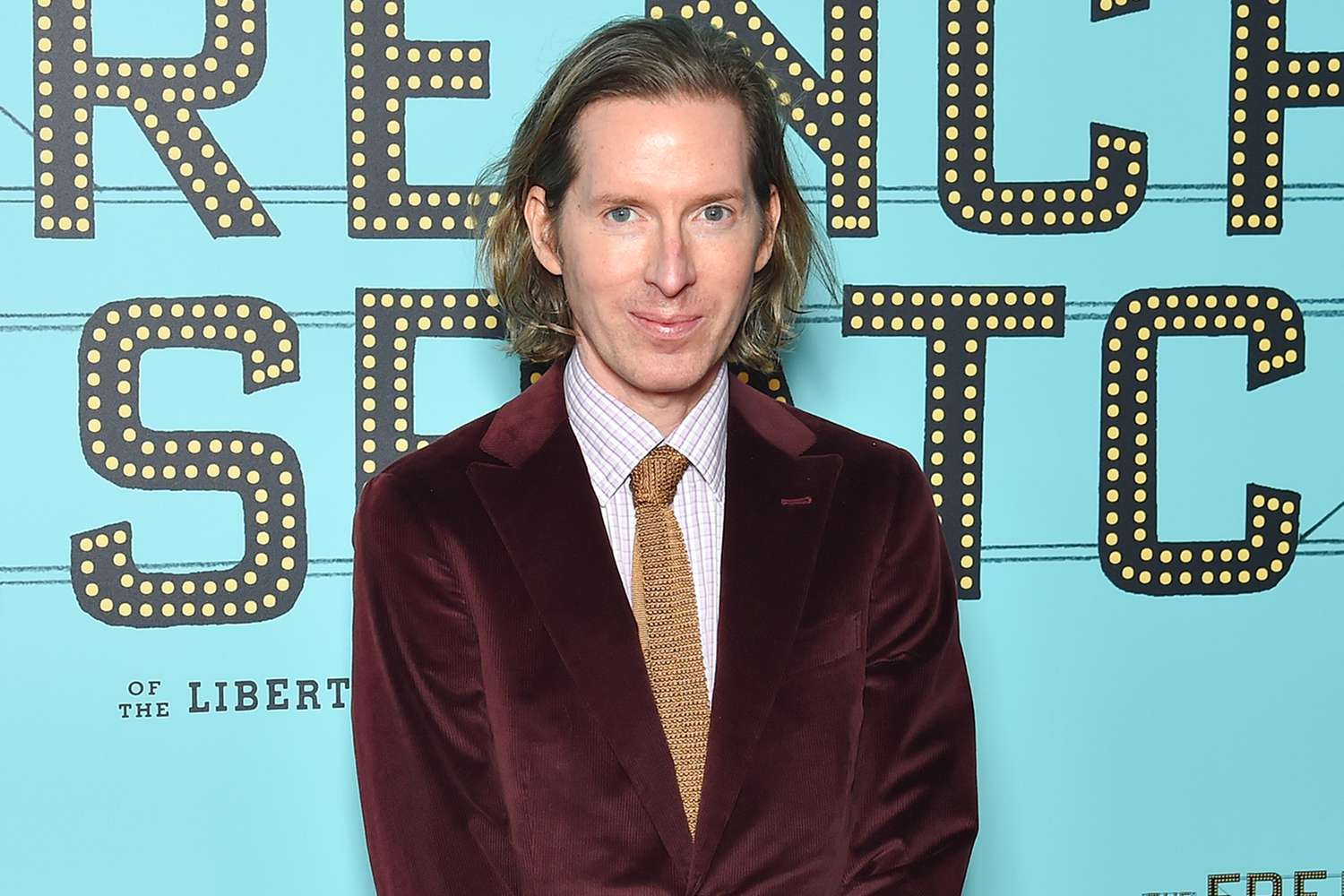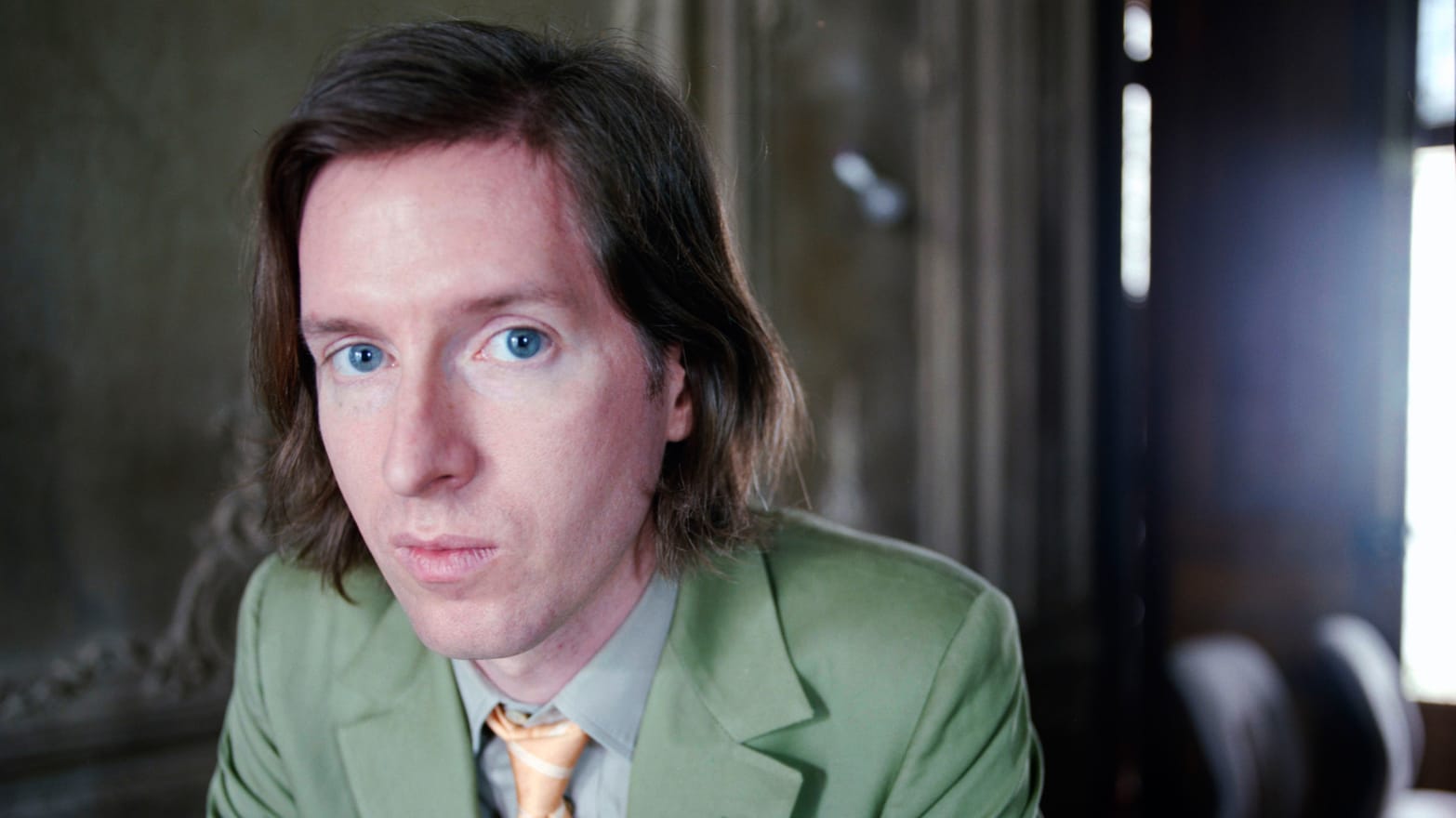The Whimsical World Of Wes Anderson Filmography
Dive into the whimsical universe of Wes Anderson - explore the auteur's unique cinematic style, eccentric characters, and visually stunning creations. Discover the magic that defines the films of Wes Anderson, a maestro of quirkiness in contemporary cinema.
Author:James PierceReviewer:Emily SanchezFeb 12, 2024501 Shares20.8K Views

Wes Anderson, the maestro of cinematic quirkiness, has etched his name in the annals of filmmaking as a visionary with an unparalleled style. Born on May 1, 1969, in Houston, Texas, Anderson's creative journey has been a delightful exploration of whimsical worlds, where meticulous aesthetics meet emotionally resonant storytelling.
From his directorial debut with "Bottle Rocket" to the critically acclaimed "The Grand Budapest Hotel," Anderson has cultivated a unique cinematic language that transports audiences to enchanting realms where every frame is a work of art.
Quick Facts About Wes Anderson
| Name | Wesley "Wes" Wales Anderson |
| Birthday | May 1, 1969 |
| Profession | Director, Screenwriter |
| Net worth | $50 million |
Early Life Of Wes Anderson
Wesley "Wes" Wales Anderson, the cinematic virtuoso, entered the world on May 1, 1969, in the vibrant city of Houston, Texas. Born to Melver Anderson, a visionary in advertising and public relations, and Texas Anne Burroughs, a woman of diverse talents in real estate and archaeology, Wes's childhood was colored by creativity and familial bonds.
Growing up with his brothers Eric and Mel, Wes faced the challenge of navigating his parents' divorce at the tender age of eight. This period of upheaval marked the genesis of his mischievous tendencies, reflected in his school behavior. However, adversity fueled transformation, leading Wes to redirect his energies toward the realm of artistic expression.
Armed with a Super 8mm camera, the young Anderson embarked on a cinematic journey, directing movies that starred not only himself but also his siblings. This early foray into filmmaking laid the foundation for his future as a storyteller. Wes's voracious appetite for literature further fueled his creative passions, drawing him into the enchanting world of storytelling.
Enrolling at St. John's School in Houston, Wes's flair for the dramatic flourished, earning him recognition for orchestrating large and complex play productions. Noteworthy among these productions was a whimsical sock puppet rendition of the 1978 Kenny Rogers album, "The Gambler," showcasing his penchant for the unconventional.
Transitioning from the bustling corridors of St. John's School, Wes Anderson continued his academic journey at the University of Texas at Austin in the late 1980s. Fate intervened when he crossed paths with Owen Wilson, a meeting that would evolve into a transformative partnership. Majoring in philosophy, Anderson found common ground with Wilson, an English student, during a playwriting class where their mutual love for movies and storytelling unfolded.
As roommates, they embarked on a cinematic odyssey, culminating in the creation of a script that would become the foundation for Anderson's directorial debut - "Bottle Rocket." After graduating with a B.A. in philosophy in 1991, Wes Anderson emerged from the cocoon of academia, ready to spread his wings and redefine the landscape of filmmaking with his unparalleled creativity and artistic vision.
Early Films - 'Bottle Rocket' And 'Rushmore'
In the genesis of Wes Anderson's cinematic journey, 'Bottle Rocket' emerged as a phoenix from the ashes of initial intentions. Originally envisioned as a serious venture featuring Owen Wilson and his brothers Luke and Andrew, the project took an unexpected turn toward the comedic realm. As the Wilson trio shifted their focus to humorous plot elements, the script transformed into a genre-defying amalgamation of comedy, romance, and crime.
With Andrew Wilson's industry connections, a modest budget, and a cache of film were secured. Yet, the resources dwindled, necessitating a shift from a full-length feature to a short film.
This abbreviated version caught the discerning eye of filmmaker Kit Carson, who, in turn, introduced it to producer Polly Platt. Carson's encouragement propelled Anderson to submit the film to the Sundance Film Festival, where it garnered enthusiastic acclaim.
The film's journey continued as it reached the radar of director James L. Brooks, a collaborator of Polly Platt. Brooks, leveraging his influence at Columbia Pictures, elevated the film's budget to a commendable five million dollars.
While 'Bottle Rocket' didn't achieve significant box office success, critics showered it with praise. Wes Anderson's directorial prowess was recognized with the Best New Filmmaker award at the MTV Movie Awards in 1996. The film's popularity soared upon its video release, solidifying Anderson's foothold in the world of cinema.
Following the spirited success of 'Bottle Rocket,' Anderson and Owen Wilson embarked on their second cinematic endeavor - 'Rushmore.' Centered around the enigmatic teenager Max Fischer, portrayed by the then-unknown Jason Schwartzman, the narrative unfolded in a preparatory school reminiscent of Anderson's own experiences at St. John's. Mirroring the director's penchant for elaborate plays, Max became a vessel for Anderson's artistic reflection.
Under the auspices of Disney chairman Joe Roth, 'Rushmore' received funding, generating considerable pre-release anticipation. The Critics Associations of New York and Los Angeles lauded Bill Murray with the Best Supporting Actor accolade for his poignant portrayal of a wistful businessman forming an unlikely friendship with Max.
Despite extensive critical acclaim and a robust publicity campaign, the film faced challenges in capturing a broad audience. While nominated for and winning numerous critical awards, the Academy overlooked 'Rushmore' in Oscar categories, underscoring the elusive nature of commercial success despite artistic triumph.
'The Royal Tenenbaums' And 'The Life Aquatic'
Wes Anderson's ascent to mainstream acclaim reached its zenith with the release of his third full-length film, "The Royal Tenenbaums," co-written with the ever-talented Owen Wilson. The film marked a turning point for Anderson, securing critical acclaim, box office success, and Academy recognition.
Boasting an ensemble cast featuring luminaries like Gene Hackman, Anjelica Houston, Gwyneth Paltrow, Danny Glover, Bill Murray, and the Wilson brothers, the movie emerged as a quintessential New York tale, exploring the dynamics of a family of perceived geniuses, their failures, and the evolution of their familial bonds.
Buoyed by the triumph of "The Royal Tenenbaums," Anderson gained a substantial budget of $50 million for his subsequent project, a testament to his growing influence in the cinematic landscape.
Collaborating with Noah Baumbach due to the surging demand for Owen Wilson as an actor, Anderson embarked on an ambitious aquatic odyssey titled "The Life Aquatic With Steve Zissou." The narrative unfolded around Steve Zissou, an oceanographer and wildlife documentarian of diminishing renown, in pursuit of the elusive jaguar shark, which may or may not exist.
Breaking new ground for Anderson, "The Life Aquatic" introduced animated sea creatures, marking the first instance of animation in his live-action films. Once again, Anderson enlisted the talents of Bill Murray, this time in a lead role. However, the production posed unparalleled challenges, as Anderson recounted in a New York Magazine interview, detailing the intricacies of coordinating pirates, actors, and boats amidst the unpredictable elements.
Upon its 2004 release, "The Life Aquatic" faced mixed critical reviews and even garnered some criticism from Anderson's dedicated fanbase. Concurrently, film critics began to dissect a recurring theme in Anderson's work - the significance of father figures. From "Rushmore" to "The Royal Tenenbaums" and now "The Life Aquatic," Anderson's narratives explored complex relationships with paternal figures, showcasing a fascination with larger-than-life characters and the quest for identity.
Continued Success Of Wes Anderson
As Wes Anderson's cinematic journey unfolded, he embraced fresh challenges and collaborations, demonstrating a boundless commitment to innovation. Following a nudge from fellow director and admirer Martin Scorsese, who dubbed Anderson "the next Martin Scorsese" and praised "Bottle Rocket" as one of the best films of the 1990s, Anderson ventured into the vibrant landscapes of India, propelled by Scorsese's encouragement to explore this exotic setting in his next film.
Eager to infuse his creative process with new energies, Anderson expressed his desire to write alongside Roman Coppola and Jason Schwartzman. In 2007, this collaborative trio embarked on a train ride through India, a unique approach to "act out" the movie before it existed.
The result was "The Darjeeling Limited" (2007), a tale of three estranged brothers reconnecting during a train journey through India. While critical reviews were mixed, Anderson's commitment to unconventional storytelling and visual richness remained unwavering.
Returning to his childhood inclination of bringing beloved stories to life, Anderson delved into the world of stop-motion animation with "Fantastic Mr. Fox" (2009). Adapted from Roald Dahl's classic book, the film featured Anderson's signature ensemble cast, including Bill Murray, Owen Wilson, and Jason Schwartzman, along with the vocal talents of George Clooneyand Meryl Streep.
The subsequent years saw Anderson crafting distinctive ensemble projects like "Moonrise Kingdom" (2012) and the commercially successful "The Grand Budapest Hotel" (2014). The latter, adorned with a stellar cast including Ralph Fiennes, F. Murray Abraham, and Tilda Swinton, secured a Golden Globe for Best Motion Picture, Musical, or Comedy.
Anderson's meticulous direction garnered him his first Academy Award nomination for directing, and the film received a total of nine Oscar nods, clinching wins for makeup, costume design, production design, and original score.
Amidst his filmography filled with characters who could seamlessly transition between his movies, Anderson's awkward yet poignant comedy continued to stand out as remarkably unique. Flourishing as a filmmaker capable of delivering independent-feeling movies under the scrutiny of big studios, Anderson's vision and style became synonymous with a rare brand of cinematic artistry.
In 2018, Anderson returned to the realm of stop-motion animation with "Isle of Dogs." Centered around a 12-year-old boy striving to protect his city's canines from a vengeful mayor, the film boasted a star-studded cast, including longtime collaborator Bill Murray.
"Isle of Dogs" made a spectacular debut, with an estimated $1.57 million over 27 theaters across six North American cities, marking the biggest opening in Anderson's career. The film went on to secure an Academy Award nomination for Best Animated Feature, reaffirming Anderson's enduring ability to captivate audiences with his distinctive storytelling and visual finesse.
Awards And Achievements Of Wes Anderson
In 1999, Anderson clinched the prestigious 'Independent Spirit Award' for 'Best Director' for his co-authored masterpiece, 'Rushmore,' a collaboration with the talented Owen Wilson. This early recognition underscored Anderson's emerging influence in independent cinema, setting the stage for his subsequent ventures into the realms of quirkiness and poignant storytelling.
Teaming up with Noah Baumbach for the whimsical 'Fantastic Mr. Fox' in 2009, Anderson's distinctive screenplay earned the duo the esteemed 'San Diego Film Critics Society Award' for 'Best Screenplay.' This recognition illuminated Anderson's ability to seamlessly transition from live-action to stop-motion animation while maintaining his signature narrative charm.
The year 2014 marked a pinnacle in Anderson's career, with a sweeping triumph for 'The Grand Budapest Hotel.' His masterful screenplay not only captivated audiences but also earned Anderson a slew of prestigious awards. The esteemed 'Best Screenplay' accolades rolled in from the 'Los Angeles Film Critics Association Awards,' the 'New York Film Critics Circle Awards,' the 'National Society of Film Critics Awards,' and the 'Toronto Film Critics Association Awards.'
Wes Anderson Net Worth
Wes Anderson, the luminary film director, screenwriter, and producer, boasts a net worthof a staggering $50 million, a testament to his indelible imprint on the cinematic landscape. Rising to prominence with his inaugural work, "Bottle Rocket," Anderson swiftly ascended to become one of the most revered directors of the modern era, captivating audiences with his unique and instantly recognizable artistic flair.
Anderson's financial success is a reflection of his unparalleled ability to infuse each of his films with a distinctive aesthetic, creating a visual tapestry that transcends the screen. His meticulous attention to detail and penchant for flavorful art styles have become hallmarks of his work, solidifying his status as a cinematic maestro with a penchant for storytelling that resonates across audiences.
Relationships Of Wes Anderson
In the tapestry of Wes Anderson's life, love has found its place in the form of a long-term connection with Juman Malouf. Juman, a multifaceted talent encompassing roles as a Lebanese writer, costume designer, and voice actress, has become a significant presence in Anderson's world. Their love story has gracefully unfolded over time, creating a foundation built on shared passions and creative endeavors.
In the year 2016, their union blossomed further as they joyfully welcomed their first child into the world. The addition of a new family member marked a poignant chapter in Anderson and Malouf's journey, infusing their lives with the boundless joys and responsibilities of parenthood.
Nestled in the romantic ambiance of Paris, the couple has chosen to make the City of Lights their home. The allure of Paris, with its timeless charm and artistic vibrancy, serves as a fitting backdrop to the life they are building together. As a couple deeply immersed in the realms of storytelling and design, one can only imagine the inspiration they draw from the rich cultural tapestry of Paris.
Facts You Probably Didn't Know About Wes Anderson
- Delving into Wes Anderson's family history unveils a fascinating connection - his great-grandfather was the older brother of none other than Edgar Rice Burroughs, the legendary author behind the creation of Tarzan and John Carter.
- In the esteemed realm of filmmaking, earning Martin Scorsese's admiration is a rare honor. Anderson achieved just that, with Scorsese declaring him the "next Martin Scorsese" in an Esquire magazine article.
- Behind Anderson's visually distinctive films lies a meticulous technique known as "planimetric staging." This involves placing the camera at a 90-degree angle with the subject, contributing to the unique visual style that sets his films apart. This technique, utilized by iconic directors like Buster Keaton and Stanley Kubrick, attests to Anderson's commitment to visual innovation.
- The collaborative synergy between Wes Anderson and Owen Wilson extends beyond on-screen partnerships. Anderson co-wrote three of his notable films, "Bottle Rocket," "Rushmore," and "The Royal Tenenbaums," with Owen Wilson.
- During the filming of "The Life Aquatic with Steve Zissou," Anderson underwent a surprising physical transformation. Shedding his pasty and bookish image, he acquired a tan, grew his hair long, and improved his fitness. Anjelica Huston, a frequent collaborator, observed this transformation, noting Anderson's sudden shift to a more handsome persona.
- Anderson's cinematic heart beats to the rhythm of "Rosemary's Baby" (1968), a film he holds close to his artistic soul. This psychological horror masterpiece stands as Anderson's personal favorite.
- A touch of nostalgia and personal connection is woven into Anderson's character names. In films like "Rushmore," some character names are borrowed from his St. John's classmates, adding an intimate touch to his storytelling.
- Anderson's directorial prowess is etched in cinematic history, with his film "Rushmore" (1998) earning a coveted spot in the National Film Registry by the Library of Congress.
- Anderson's creative synergy extends to his collaborations with Roman Coppola. Together, they penned the scripts for "The Darjeeling Limited" (2007) and "Moonrise Kingdom" (2012).
- An Italian song paying tribute to Wes Anderson titled "Wes Anderson" by I Cani stands as a testament to his global cultural impact.
- An impressive seven of Wes Anderson's films, including "Bottle Rocket," "Rushmore," and "Fantastic Mr. Fox," find their place in the Criterion Collection.
- Many of Anderson's cast members share connections with "The Godfather" (1972). From featuring James Caan in his debut film, "Bottle Rocket," to casting Jason Schwartzman, son of Talia Shire, and collaborating with Roman Coppola, Anderson's films echo the influence of this cinematic classic.
People Also Ask
What Inspired Wes Anderson's Unique Visual Style?
Wes Anderson's visual style is influenced by various factors, including classic cinema, literature, and his personal experiences. The meticulous use of symmetry and vivid color palettes are notable components.
Does Wes Anderson Plan To Collaborate With New Actors In Future Projects?
Wes Anderson has a penchant for working with a recurring ensemble cast, but he has also introduced new faces in recent films. His casting choices often align with the narrative demands of each project.
What Are Wes Anderson's Favorite Films Apart From "Rosemary's Baby"?
While "Rosemary's Baby" holds a special place, Anderson has expressed admiration for various films. "The 400 Blows" and "The Graduate" are among his favorites, showcasing his diverse cinematic tastes.
Has Wes Anderson Ever Discussed His Writing Process With Roman Coppola?
Yes, Wes Anderson and Roman Coppola have collaborated on multiple scripts, including "The Darjeeling Limited" and "Moonrise Kingdom." Anderson has mentioned the collaborative nature of their writing process in interviews.
Conclusion - Wes Anderson
In the tapestry of contemporary cinema, Wes Anderson's distinctive threads weave tales of quirkiness, beauty, and genuine emotion. His films, each a carefully crafted universe of whimsy and charm, stand as a testament to the power of storytelling when coupled with a keen eye for visual brilliance. From the peculiar characters to the meticulously composed frames, Anderson's legacy is a kaleidoscope of creativity that continues to influence and inspire.
As we eagerly await his future endeavors, one thing remains certain - the whimsical world of Wes Anderson is a place we'll continue to revisit, finding comfort in its idiosyncrasies and marveling at the enduring magic of cinematic storytelling.
Jump to
Quick Facts About Wes Anderson
Early Life Of Wes Anderson
Early Films - 'Bottle Rocket' And 'Rushmore'
'The Royal Tenenbaums' And 'The Life Aquatic'
Continued Success Of Wes Anderson
Awards And Achievements Of Wes Anderson
Wes Anderson Net Worth
Relationships Of Wes Anderson
Facts You Probably Didn't Know About Wes Anderson
People Also Ask
Conclusion - Wes Anderson

James Pierce
Author

Emily Sanchez
Reviewer
Latest Articles
Popular Articles



